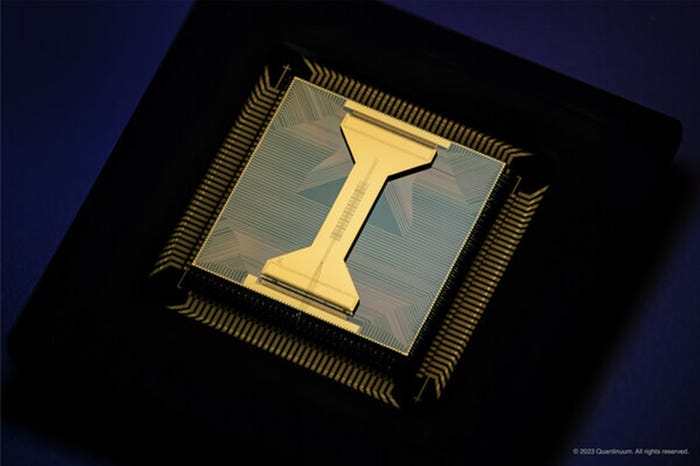Great Expectations: Can 5G Deliver on Its Promises?Great Expectations: Can 5G Deliver on Its Promises?
While 5G technology may eventually deliver on its promises, it is in serious danger of becoming the lost generation of telecommunications

The journey to a smart, connected future was never going to be simple. It involves multiple technologies and multiple stakeholders and requires consensus on international standards and protocols to enable delivery. However, the successful transition from 3G to 4G proved what could be achieved and raised stakeholder expectations about what might be possible with 5G.
5G is the fifth generation of cellular networks. Up to 100 times faster than 4G, its aim is to deliver faster connectivity speeds, ultra-low latency and greater bandwidth: transforming industries and dramatically enhancing day-to-day experiences. 5G is the means to deliver services that we used to see as futuristic, from e-health and autonomous vehicles to advanced mobile cloud gaming. In other words, 5G technology is the foundation for creating a smarter, safer and more sustainable world.
The development of 5G is being overseen by a global initiative called 3PGG, which is an amalgam of seven telecommunications standards organizations. Based on representations from multiple stakeholders, 3PGG develops the Technical Specifications and Technical Reports that will enable the development of the 5G network. Its remit includes Radio Access Networks (RAN), Services & Systems Aspects (SA) and Core Network & Terminals (CT).
Progress on 5G standards is measured by the milestones achieved within particular releases by 3GPP. New features are “functionality frozen” and are ready for implementation when a release is completed. 3GPP works on a number of releases in parallel, starting future work well in advance of the completion of the current release. The major focus for all 3GPP releases is to make the system backward and forward compatible where possible, to ensure that the operation of user equipment is uninterrupted.
The 5G Evolution Process
Release 17 was scoped in December 2019 and completed in June 2022. It marks the conclusion of the first phase of the 5G technology evolution and continues the work of previous releases to expand 5G into new devices, applications and deployments. These include:
Reduced capability (“RedCap” or “NR-Light”) devices: Release 17 allows 5G to efficiently support lower complexity IoT devices (e.g., sensors, wearables and video cameras) by scaling down wideband 5G NR design (i.e., 100 MHz bandwidth) to 20 MHz/100 MHz in sub-7/mmWave. It also reduces the number of receive antennas required at the device and enables further energy savings and coexistence with other 5G NR devices.
Non-terrestrial networks (NTN): Release 17 introduced 5G NR support for satellite communications in two distinct projects: one focusing on satellite backhaul communications for CPEs and direct low data rate services for handhelds, and a second project adapting eMTC/NB-IoT operation to satellite communications.
Sidelink expansion: Building on the previous 5G PC5 design from C-V2X (cellular vehicle-to-everything), Release 17 adds new and enhanced sidelink capabilities, such as optimized resource allocation, power savings, and new frequency band support. It also expands sidelink to new use cases such as public safety, IoT and others.
Enhanced precise positioning: Release 17 further improves 5G positioning to meet more stringent use case requirements such as centimeter-level accuracy. Additional enhancements include positioning latency reduction, improved positioning efficiency for increased capacity, and better GNSS-assisted positioning performance.
Boundless XR (extended reality): the Release 17 project on XR focused on studying and characterizing various types of XR traffic (AR, VR, cloud gaming). The study defines requirements and evaluation methodology for the identified XR traffic types and provides performance evaluations used toward the identification of areas of improvement for a future Release 18 project.
In addition, Release 17 incorporates many smaller 5G system enhancement projects, including improvements to multi-radio dual connectivity, multi-SIM support, higher-order modulation, small data transmission, quality of experience, data collection and RAN slicing, to name a few.
Delivery Problems
This sounds like cause for celebration, but concern is growing that 5G is taking far too long to implement. One practical issue is the growing number of stakeholders who wish to make representations to 3PGG regarding the 5G standards and protocols. More than 450 organizations contributed to the scope of Release 17, and more than 500 organizations have made representations regarding Release 18. This number of vested interests obviously takes some time to parse and prioritize.
On the other hand, the fact that more and more organizations are recognizing the importance of 5G to their business model could be interpreted as a sign that the will to succeed is growing. Plus, 3GPP seems perfectly capable of absorbing this burgeoning stakeholder interest. It certainly deserves credit for completing Release 17 with its scope largely intact and to the original timescale, despite the global pandemic.
Another time-consuming factor is that 5G requires the development of an infrastructure that moves far beyond the traditional telecommunications service supplier model. This requires a fundamental shift from the traditional reliance on the supply of wireless services from modern network operators in favor of dedicated private networks or fixed-wireless access services. Distributed antenna systems are already being used in public places such as airports, sports stadiums and shopping malls, demonstrating the need for locally dedicated and controlled networks.
Building your own network certainly has its advantages. You have more control over the underlying infrastructure, its maintenance, intended use and security. This is especially true in environments like subways, but it's also beneficial for individual businesses. Combining the deployment of technologies such as landline access and satellite with the speed and relative cost of deployment, it's easy to see the appeal: but this model may be at odds with the interests of the main telecoms players. For example, existing mobile operators have huge networks in place already that need to be updated and maintained, while growing their geographic coverage. They may not be as agile as a specialist service provider deploying a private network and using either the operator's connectivity or its own.
A further issue for 5G is consumer appeal. Let’s face it: 5G-enabled phones are still mostly using 4G technology! This lag between the availability of the hardware and any demonstrable, practical improvements in service and functionality is why “5G fatigue” is creeping in. No amount of marketing hype is likely to generate the excitement and anticipation that there was around the inception of 4G. That ship, it seems, has sailed.
Looking Ahead
An ongoing schedule of technological expansions and upgrades to 5G networks will inevitably increase its utility, however, increasing its commercial prospects. Work is already underway on Release 18, which is intended to herald the arrival of 5G-Advanced. Inevitably, 5G-Advanced comes with a whole new range of expectations. It is intended to strengthen the end-to-end 5G system foundation (further improving speed, coverage, mobility, power efficiency and more) and to proliferate 5G to virtually all devices and use cases. The latter includes the use of drones and enhanced satellites to improve coverage and mobility for smartphone users.
5G-Advanced should be the key to developing new services and capabilities that could deliver smart cities within the next decade by helping to improve road safety, reduce traffic congestion and lower pollution and energy consumption. It could also boost access to education, among other things. Perhaps this is what will redeem 5G’s reputation – but we may have to wait a few more years to find out.
In Conclusion
The original vision for 5G was to improve public safety, traffic management, energy efficiency and more by allowing state and local governments to transfer and process large amounts of data in real-time. Expectations were high, but the transition from 4G to 5G seems to have been far less dramatic than the leap from 3G to 4G – at least so far. Slow rollout, high implementation costs, technical limitations, and compatibility issues continue to overshadow the technical advances being made behind the scenes.
And while 5G technology may eventually deliver on its promises, it is in serious danger of becoming the lost generation of telecommunications: the industry is already defining 6G, which will operate at significantly higher frequencies than 4G or 5G, starting at about 95 GHz and reaching into the terahertz range.
About the Author
You May Also Like








